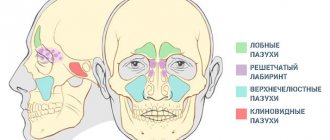When and why can pneumonia occur in a child?
Pneumonia or pneumonia most often affects children in the first two years of life. Pneumonia in children occurs at different periods of their lives. A child can get sick in the first hours of life.
The main causes of pneumonia are infectious agents such as pneumococcus, chlamydia, mycoplasma, MS virus, Pseudomonas aeruginosa, etc.
The causes of pneumonia are specific to different ages, for example, newborns are more often affected by chlamydia found in the mother's birth canal.
Other causes of pneumonia are immunodeficiencies (primary and secondary, for example HIV), ingestion of amniotic fluid by the fetus due to lack of oxygen, choking on vomit with entry into the respiratory tract, prolonged exposure to mechanical ventilation, etc.
Pneumonia in children is one of the leading causes of death. Every year, about 1 billion children worldwide die from pneumonia.
Types of disease
There are several classification signs of pneumonia in an infant:
- the causative agents of the disease are viral, fungal and bacterial pneumonia, which requires treatment with antibiotics;
- according to the degree of tissue damage in the lungs, they are divided into focal (small areas), total (one whole lung) and bilateral (both lungs at once), while the process from focal to bilateral develops very quickly;
- According to the method of infection, they distinguish intrauterine, acquired, aspiration (entry of amniotic fluid into the child’s respiratory system) and birth (passage of the infected birth canal).
The type of disease is determined in order to select the appropriate treatment.
Pneumonia in children
Pneumonia has a certain prevalence, for example, a high incidence of pneumonia is observed in closed social institutions (boarding schools, orphanages), among people with bad habits and a low standard of living.
Pneumonia in children is a very dangerous respiratory tract infection, since the supply of oxygen to the body is reduced and homeostasis processes are hampered, and serious complications develop that lead to the death of the child.
After pneumonia, a child may lose his ability to work, as well as remain disabled.
The main complications of pneumonia will be abscess or gangrene of the lung, inflammation of the pleura (pleurisy), acute respiratory failure, inflammation of the lining of the heart (endocarditis) and the tissue that surrounds it (pericarditis), meningitis, pulmonary edema and sepsis.
Inflammation of the lungs can occur during a hospital stay or after discharge from hospital (after 72 hours), or it can occur at home (community-acquired pneumonia).
The causes of pneumonia are birth trauma, developmental defects of the lungs and heart, hereditary diseases (cystic fibrosis, immunodeficiency), reduced body weight (hypotrophy), and insufficient intake of vitamins into the body (hypovitaminosis).
Pneumonia in school-age children can develop as a result of a source of chronic infection (otitis media, sinusitis, etc.), bronchitis, bad habits and hereditary pathology.
The main disease of children with immunodeficiencies is pneumonia.
Symptoms in children can be varied, depending on age, underlying diseases, nutrition, immunity and living conditions.
Signs of pneumonia in a child
The leading cause of child mortality is pneumonia. Symptoms in children depend on the development and course of the disease. Pneumonia develops as a result of the penetration of an infectious agent (the most common cause of the disease) into the lung tissue.
As a result of inhalation of microorganisms from the environment, the penetration of pathogenic flora from foci of chronic infection, a focus of inflammation of the lung tissue develops - pneumonia in children.
The smallest structures of the respiratory tract (alveoli and bronchioles) fill with pus and interfere with the penetration of oxygen from the lungs into the blood.
As a result, the gas composition of the blood is disrupted and a glut of carbon dioxide occurs, as well as intoxication with waste products of microbes.
Inflammation of the lungs is accompanied by the development of respiratory failure, and in severe cases, heart failure.
Such a high prevalence has its reasons for pneumonia. What are the signs of such a terrible disease as pneumonia? Symptoms in children depend on the size of the inflamed area of lung tissue, for example, pneumonia in children can be focal, segmental, lobar, confluent and total.
Pneumonia can be unilateral or affect the lungs on both sides, i.e. bilateral pneumonia in children. Inflammation of the lungs can develop both primary and secondary, i.e. against the background of an existing infectious disease that is not localized in the lung tissue, for example bronchitis.
To make a more accurate diagnosis of pneumonia in children and adults, community-acquired and hospital-acquired forms are distinguished.
Pneumonia in children may be associated with medical interventions, such as mechanical ventilation, hemodialysis, and parenteral administration of drugs.
Residents of closed social institutions, such as orphanages, are especially at risk for pneumonia.
This is due to the low level of sanitation, high exposure of children, poor living conditions, high resistance to antibiotics of microorganism strains and low appeal due to the disease.
Pneumonia is an indicator of social disadvantage and poor living conditions; these aspects are the main causes of pneumonia.
Inflammation of the lungs in children is most severe at a young age and this is due to the low level of development of protective mechanisms in the lung tissue, strong blood supply to the lung parenchyma and sufficient vulnerability of the respiratory tract mucosa.
What types of pneumonia are there: classification
By localization:
- one-sided (one lung is affected);
- bilateral (both lungs are inflamed).
Based on its origin, pneumonia is divided into three types.
- Fungal (up to 5% of cases) is the rarest type of disease and the most dangerous. In childhood, it most often occurs against the background of improper and/or uncontrolled use of antibiotics.
- Bacterial (about 35% of cases) - occurs either separately or as a complication of a respiratory disease. Requires immediate medical attention for treatment with antibiotics.
- Viral (about 60% of patients) is a mild form of the disease, which in children goes away on its own in about a week, being cured by the body.
Symptoms of pneumonia in infants
Pneumonia in children can occur as typical or atypical.
The typical clinical picture that characterizes pneumonia is represented by an increase in temperature, a dry, and subsequently productive cough, retraction of the yielding areas of the chest (intercostal spaces, supraclavicular fossa), shortness of breath.
Sometimes wheezing can be heard from a distance during pneumonia.
Infants often refuse to eat or drink, which characterizes the intoxication syndrome of pneumonia.
Pneumonia in infants may be accompanied by loss of consciousness, a sharp drop in temperature and the development of convulsions. Some children may experience seizures when they have a fever, which may be a sign of an illness such as pneumonia. Symptoms in children of different ages can also develop from an examination by a pediatrician.
Inflammation of the lungs is accompanied by weakening of breathing, dullness of percussion sound over the lungs, decreased mobility of the lower pulmonary edge, and increased vocal tremors.
Pneumonia in children has one of the main symptoms: cough, which upon examination manifests itself as the presence of dry or moist wheezing of various sizes.
Atypical pneumonia is characterized by a gradual onset, dry cough and a predominance of intoxication symptoms: headache, weakness, loss of appetite, catarrhal symptoms in the throat and nasopharynx.
This clinical picture usually occurs with pneumonia, the causative agent of which is chlamydia, mycoplasma.
An important aspect is the presence of secondary pneumonia, the focus of which is located outside the lung tissue.
In this case, pneumonia develops when vomit enters the respiratory tract or the fetus swallows amniotic fluid during pregnancy; this is aspiration pneumonia.
Symptoms in children develop very quickly because vomit is a very aggressive environment for lung tissue, and there is a risk of complications and mortality.
It is also important to know about lobar pneumonia. The causative agent is pneumococcus, which often causes damage to the lungs on both sides, an increase in temperature to high values, the development of shortness of breath, intoxication and more severe complications.
Taken together, pneumonia is a serious disease with certain symptoms and a diagnosis of pneumonia.
Symptoms and treatment, as well as diagnosis, are the main links in the fight against the disease. For an accurate diagnosis of pneumonia, not only examination and complaints of the patient are required, but also laboratory and instrumental research methods.
Chlamydial, mycoplasma pneumonia in a child
In recent years, the role of the atypical course of the disease has increased.
Pneumonia is caused by infectious agents that damage lung tissue.
The causative agents are mycoplasma and chlamydia.
Pneumonia caused by these pathogens has certain specific symptoms.
The main disease of young children with respiratory tract damage is pneumonia.
Symptoms in children are as follows: pneumonia begins with the development of respiratory syndrome (cough with almost no sputum, fever, scanty auscultatory data), as well as very often extrapulmonary symptoms.
The main site of influence of such pathogens is the lung tissue, i.e. pneumonia develops.
Symptoms and treatment of such a disease consist of an integrated approach, taking into account extrapulmonary symptoms (gastrointestinal disorders, arthralgia, myalgia, rash, etc.).
Pneumonia in children with an atypical course is diagnosed based on the results of laboratory diagnostics.
The main diagnostic method is PCR. Such pneumonia can be treated with the mandatory prescription of antibiotics, taking into account the sensitivity of microorganisms to them.
Clinical guidelines (general recommendations for the treatment of pneumonia)
Treatment of pneumonia is a complex and lengthy process that occurs in a hospital setting. An integrated approach is used to treat this disease. A small patient is prescribed antibiotics according to the identified bacterial pathogen, or broad-spectrum antibiotics if the pathogen cannot be identified. Cough suppressants, antipyretics (if necessary), antiviral and immunomodulatory drugs are also prescribed. When treating “pneumonia”, bed rest, drinking regime and a balanced diet are important. To avoid complications caused by antibiotics, babies are also prescribed probiotics. A week after the start of treatment, the child is recommended to take short walks in the fresh air under favorable weather conditions. Treatment of pneumonia lasts approximately 1.5 months; if the disease is advanced, hospitalization can last up to 3 months.
Parents often ask whether it is possible to treat their child at home. The decision on the need for hospitalization in this case is made by the doctor, based on the interests of the child. Children under one year of age, regardless of the severity of the disease, are required to be hospitalized due to the high risk of sudden complications.
Reference and information material
Author of the article
Gerasimenko Igor Olegovich
General doctor
[1] Qu JX, Gu L, Pu ZH, et al. Viral etiology of community-acquired pneumonia among adolescents and adults with mild or moderate severity and its relation to age and severity. BMC Infectious Diseases. 2015;15:89. doi:10.1186/s12879-015-0808-0.
Loading...
Take other surveys








